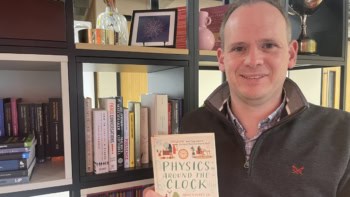
The UK city of Bristol has a strong connection to quantum mechanics because it gave the world Paul Dirac, who made pioneering contributions to the development of the theory. Now, it seems that buses serving the city are behaving in a quantum-like way.
Passengers using a smartphone app that tracks the progress of Bristol buses have noticed that the existence of an approaching bus depends on whether the user clicks on that bus. When a user makes this “measurement” the bus either remains live on the app or vanishes. This is much like the cat in Schrödinger’s famous thought experiment, which illustrates the paradox of quantum superposition and the role of measurement in quantum mechanics.
The operator First Bus explains that its app does not show the actual position of its buses, but rather where the vehicles are expected to be according to its schedule. Apparently, this also applies to individual buses that have been cancelled. When a user taps on a specific bus, they are given a live update of the service, so if that bus is not in service it will vanish from the app.
This article in Bristol Live makes a very good case for the quantum paradox of “Schrödinger’s bus”.
X-rayed swarm
X-rays were discovered in 1895 by Wilhelm Röntgen, who instantly recognized how they could be used to peer inside optically opaque objects. Since then, increasingly sophisticated X-ray imaging techniques have been used in medicine, science and engineering.
Now, researchers at Colorado University Boulder have used X-ray computed tomography (CT) to study swarms of bees. These swarms comprise thousands of worker bees that follow a queen and form a structure that would normally hang from the branch of a tree.
The physicist Orit Peleg and colleagues used a queen to coax worker bees into a swarm in their lab – in front of a small CT imaging system. They were able to resolve individual bees within the swarm and their results showed that the structure of the swarm is described by a scaling law such that each layer of bees in the swarm supports the same proportion of its weight within the structure. Although a bee can support as many as 35 of its colleagues, the team found that bees in a swarm must lift at most four other bees. As a result, the insects can easily form stable structures containing thousands of individuals.
Peleg and colleagues describe the research in Scientific Reports.



